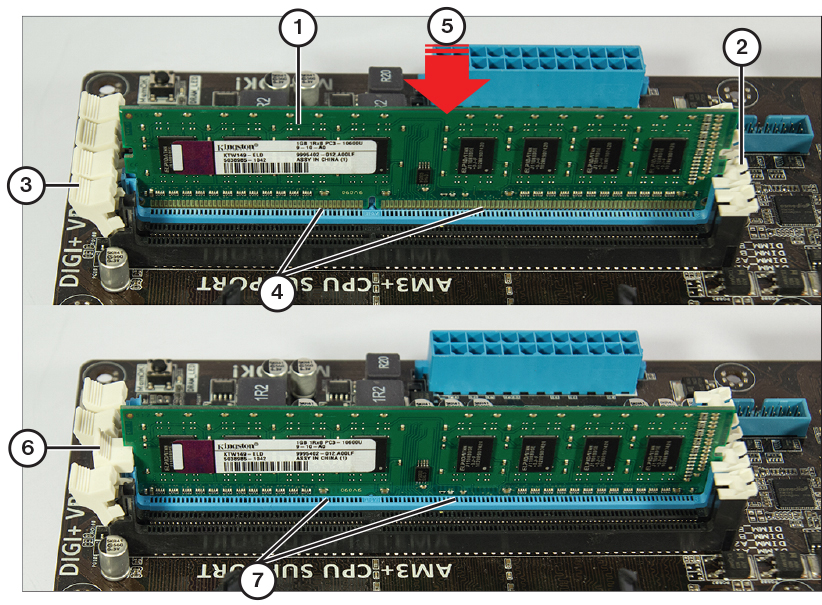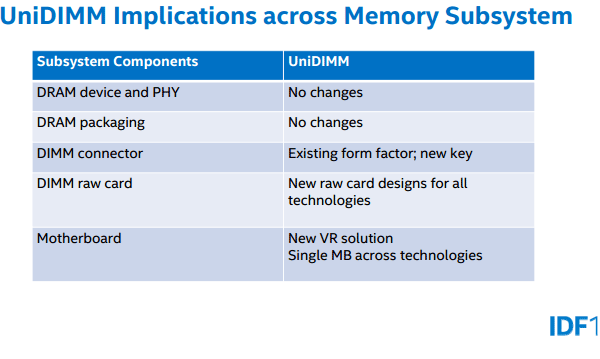A= DDR DIMM B= DDR3 DIMM C= DDR4 DIMM D= DDR2 DIMM E= 200-Pin SODIMM F= 144-Pin SODIMM G= UniDIMM. There are critical times when memory problems often manifest themselves. Match the critical times on the left with the corresponding descriptions on. UniDIMM Explanation UniDIMM (Universal DIMM) is a specification for DIMMs and is designed to carry DRAM chips. UniDIMMs can be populated with either DDR3 or DDR4 chips, but do not support any additional memory control logic. Because of this, the computer's memory controller must support both DDR3 and DDR4 memory standards. Start studying TestOut PC Pro 3.7.6. Learn vocabulary, terms, and more with flashcards, games, and other study tools.
Dimm Vs Udimm Memory
About DDR3 RAM
DDR3 SDRAM is short for Double Data Rate 3 Synchronous Dynamic Random-Access Memory, which is a type of synchronous dynamic random-access memory (SDRAM) with a high bandwidth interface. Since 2007, it has been in use. Keep reading and then you can know much information about DDR3 RAM in this post offered by MiniTool.
DDR3 RAM is the higher-speed successor to DDR and DDR2, and at the same time, it is also the predecessor to DDR4 synchronous dynamic random-access memory (SDRAM) chips. Due to different signaling voltages, timing, and other factors, DDR3 SDRAM is neither forward nor backward compatible with any previous type of random-access memory (RAM).
The main advantage of DDR3 RAM compared to its direct predecessor, DDR2 SDRAM, is the ability to transfer data at twice the rate (eight times the speed of its internal memory arrays), enabling higher bandwidth or peak data rates.

- In most cases, no. Your standard DDR4 module is 288 pins where a DDR3 module is 240 pins (for SODIMS it's 260 vs 204). However, there is something called a UniDIMM SO-DIMM which is a form factor that accepts both DDR3 and DDR4.
- Find compatible DRAM memory and SSD upgrades for your PC or Laptop with our Crucial Advisor tool or Crucial System Scanner, with FREE US delivery!
A 64-bit wide DDR3 module can achieve a transfer rate of up to 64 times the memory clock speed by transmitting twice a cycle of the quad clock signal.
64-bit data is transmitted through each memory module at a time. The transfer rate of DDR3 SDRAM is (memory clock rate) x 4 (for bus clock multiplier) x 2 (for data rate) x 64 (number of bits transmitted) / 8 (number of bits in a byte). Therefore, with a memory clock frequency of 100 MHz, the maximum transfer rate of DDR3 SDRAM is 6400 MB/s.
The DDR3 standard allows DRAM chips with a capacity of up to 8 gibibits, and has a maximum of 4 levels, each of 64 bits, with a total capacity of up to 16 GiB per DDR3 DIMM. Since Ivy Bridge-E did not address hardware limitations until 2013, most older Intel CPUs only support up to 4 Gb chips with 8 GiB DIMMs (Intel's Core 2 DDR3 chipset only supports 2 Gb). All AMD CPUs correctly support the full specifications of 16 GiB DDR3 DIMMs.
History
In February 2005, Samsung released the first prototype of the DDR3 memory chip. Samsung played an important role in the development and standardization of DDR3. In 2007, DDR3 was officially launched.
The main driving force behind the increase in DDR3 usage has been the new Intel Core i7 processors and AMD's Phenom II processor, both of which have internal memory controllers: the former needs DDR3 and the latter recommends it.

In September 2012, the DDR4 RAM, the successor of the DDR3 RAM, was released.
Specs
Compared with DDR2 RAM, DDR3 RAM consumes less power. This reduction comes from the discrepancy in supply voltages: DDR2 is 1.8 V or 1.9 V, while DDR3 is 1.35 V or 1.5V. The 1.5 V supply voltage works well with the 90-nanometer fabrication technology used in the original DDR3 chips. Some manufacturers have also proposed the use of “dual-gate” transistors to reduce current leakage.
According to JEDEC: when memory stability is the primary consideration (such as in a server or other mission-critical device), 1.575 volts should be considered an absolute maximum. What’s more, JEDEC states that memory modules must withstand voltages up to 1.80 volts to suffer permanent damage, although they are not required to function properly at this level.
Another advantage is that its prefetch buffer is 8-burst-deep. In contrast, DDR2's prefetch buffer is 4-burst-deep, while DDR's prefetch buffer is 2-burst-deep. This advantage is an enabling technology in DDR3 transfer speed.
DDR3 dual-inline memory modules (DIMMs) have 240 pins and are not electrically compatible with DDR2. The key notch locations in DDR2 and DDR3 DIMMs are different, preventing them from being accidentally replaced. Not only are the keyed differently, but the side of DDR2 has round notches, while the side of DDR3 modules has square notches.
For the Skylake microarchitecture, Intel also designed a SO-DIMM package called UniDIMM, which can use DDR3 or DDR4 chips. The CPU's integrated memory controller can then use any of them.

The purpose of UniDIMM is to deal with the transition from DDR3 to DDR4, in which price and availability may require switching RAM types. UniDIMMs have the same dimensions and the number of the pin as regular DDR4 SO-DIMMs, but the notch is located differently to avoid accidental use in an incompatible DDR4 SO-DIMM socket.
Unidimm Ram
DDR3 latencies are numerically higher because the I/O bus clock cycles that measure them are shorter. The actual time interval is similar to the DDR2 delay, about 10 ns.

The power consumption of a single SDRAM chip (or, by extension, DIMM) depends on many factors, including speed, type of usage, voltage and so on. Dell's Power Advisor calculates that each 4 GB ECC DDR1333 RDIMM consumes approximately 4W. In comparison, the more modern mainstream desktop-oriented part 8 GB DDR3/1600 DIMM, is rated at 2.58 W, although being significantly faster.
Unidimm
Bottom Line
Udimm Ram
What is DDR3 RAM? After reading this post, you should clearly know that it is a type of synchronous dynamic random-access memory. And you can also get some information about its history and specs.
